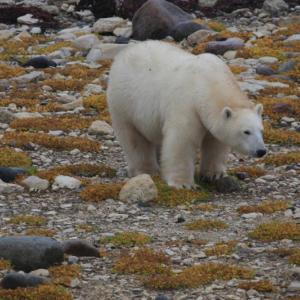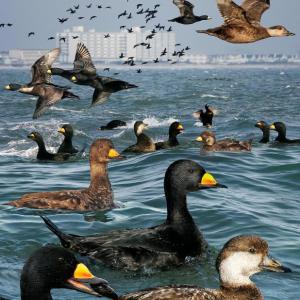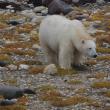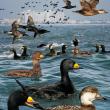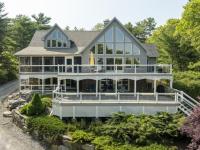Maine’s Connection to a Great Inland Sea
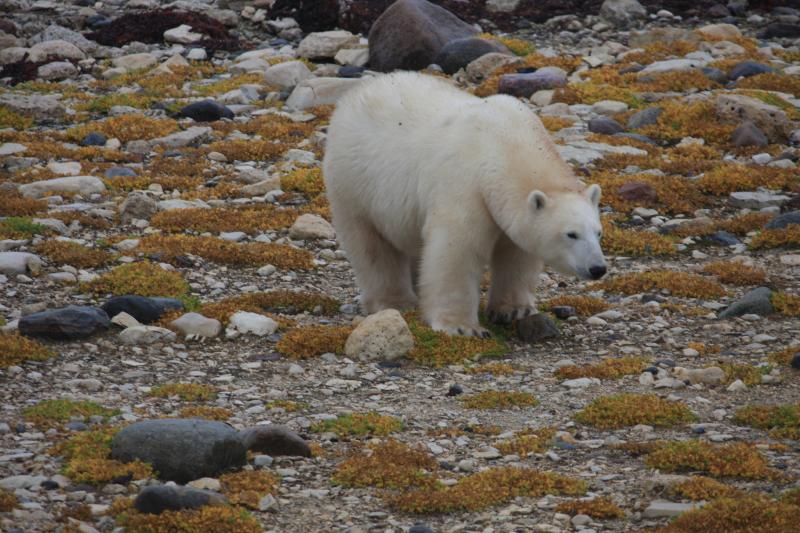 Birds, like scoters, that winter along our Maine coast may see polar bears during their migratory journey north through Hudson and James Bay. Photo courtesy of Traveling Otter from Wikimedia Commons.
Birds, like scoters, that winter along our Maine coast may see polar bears during their migratory journey north through Hudson and James Bay. Photo courtesy of Traveling Otter from Wikimedia Commons.
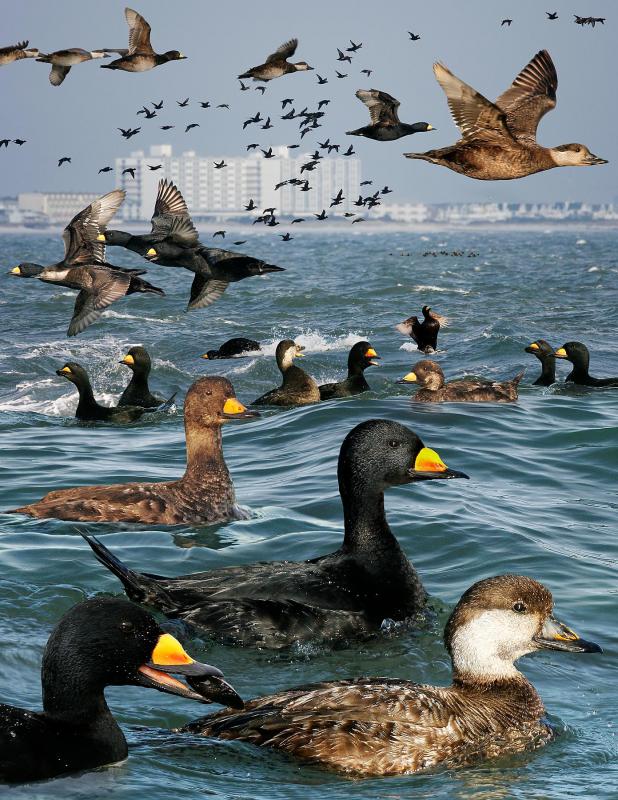 Black scoters are a common wintering bird along the Atlantic Coast of North America including along the Maine coast, but they stop over during migration along the Hudson-James Bay coast. From The Crossley ID Guide Eastern Birds by Richard Crossley, courtesy Wikimedia Commons.
Black scoters are a common wintering bird along the Atlantic Coast of North America including along the Maine coast, but they stop over during migration along the Hudson-James Bay coast. From The Crossley ID Guide Eastern Birds by Richard Crossley, courtesy Wikimedia Commons.
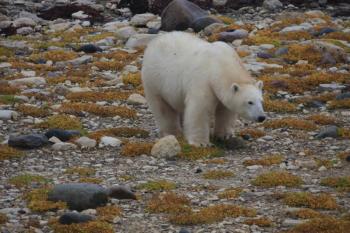 Birds, like scoters, that winter along our Maine coast may see polar bears during their migratory journey north through Hudson and James Bay. Photo courtesy of Traveling Otter from Wikimedia Commons.
Birds, like scoters, that winter along our Maine coast may see polar bears during their migratory journey north through Hudson and James Bay. Photo courtesy of Traveling Otter from Wikimedia Commons.
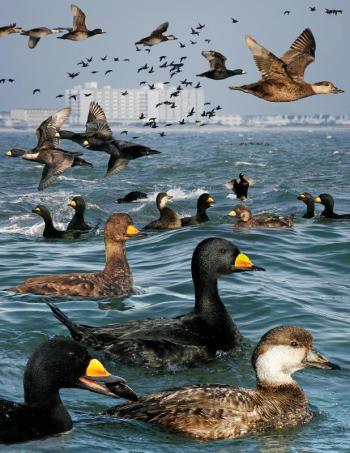 Black scoters are a common wintering bird along the Atlantic Coast of North America including along the Maine coast, but they stop over during migration along the Hudson-James Bay coast. From The Crossley ID Guide Eastern Birds by Richard Crossley, courtesy Wikimedia Commons.
Black scoters are a common wintering bird along the Atlantic Coast of North America including along the Maine coast, but they stop over during migration along the Hudson-James Bay coast. From The Crossley ID Guide Eastern Birds by Richard Crossley, courtesy Wikimedia Commons.
A careful scan of the ocean here in mid-coast Maine in late winter (or “early spring,” if you are more of the hopeful bent) will often yield a bonanza of sea ducks. The males will often be in or near their peak breeding season finery as they work to impress females before setting off on their northward journeys to the nesting grounds. White-winged, surf, and black scoters are among the larger-bodied of these sea ducks that begin amassing in higher numbers along the Maine coast in March and April. They will soon be headed to the Boreal Forest region of Canada and Alaska to nest.
On their way north, many will stop off along the shores of one of the world’s most incredible but little-known inland seas—Hudson and James Bay. This vast marine area, virtually completely iced-covered in winter, is home to belugas, ringed and bearded seals, and the world’s southernmost population of polar bears.
It is also one of the most important places for migratory birds on Earth!
Along its wild and undeveloped natural shores are abundant foods that allow birds like scoters to mass up into large flocks while they feed and rest before moving north in spring and south in the fall. Many other ducks and geese, tens of thousands of them, also use the pristine coastlines of Hudson and James Bay during spring and fall migration. Canada geese, snow geese, long-tailed ducks, and just about every other Boreal breeding waterfowl and waterbird will funnel through this area at some point during the migration period.
One of the other bird groups for which the Hudson-James Bay coast are globally important are the shorebirds—the birds in the sandpiper and plover families. Beginning in April and May, we’ll start to see, here in Maine, returning migrants on their way north. These include black-bellied plovers, semipalmated plovers, greater and lesser yellowlegs, semipalmated sandpipers, pectoral sandpjpers, and many others.
The Hudson-James Bay shoreline may be their next rest stop.
In the fall, many thousands of these same shorebirds utilize this northern coast for refueling from July through September. Radio tracking studies have confirmed that many of these shorebirds make non-stop overnight flights in late summer from James Bay to the coast of Maine and other New England states.
Hard to get your head around the idea that a bird we could see here on the Maine coast might be in a place where it could see a polar bear a few days later!
But that’s the amazing connections that these birds show us that we have with other parts of this amazing Earth.
That’s why it is such good news to find out that the Mushkegowuk Council, made up of First Nations from the northern Ontario part of Hudson and James Bay, has begun the process to designate a massive National Marine Conservation Area for the Ontario portion of the coast and offshore waters.
And we can let them know that we support this initiative by signing on to a letter at this new, fun website developed in support of the proposal: https://marine.wildlandsleague.org/
Please check it out to learn more and add your name to those in favor of protecting this globally important place for birds and more!
Jeffrey V. Wells, Ph.D., is a Fellow of the Cornell Lab of Ornithology and Vice President of Boreal Conservation for National Audubon. Dr. Wells is one of the nation's leading bird experts and conservation biologists and author of the “Birder’s Conservation Handbook.” His grandfather, the late John Chase, was a columnist for the Boothbay Register for many years. Allison Childs Wells, formerly of the Cornell Lab of Ornithology, is a senior director at the Natural Resources Council of Maine, a nonprofit membership organization working statewide to protect the nature of Maine. Both are widely published natural history writers and are the authors of the popular books, “Maine’s Favorite Birds” (Tilbury House) and “Birds of Aruba, Bonaire, and Curaçao: A Site and Field Guide,” (Cornell University Press).
Event Date
Address
United States

